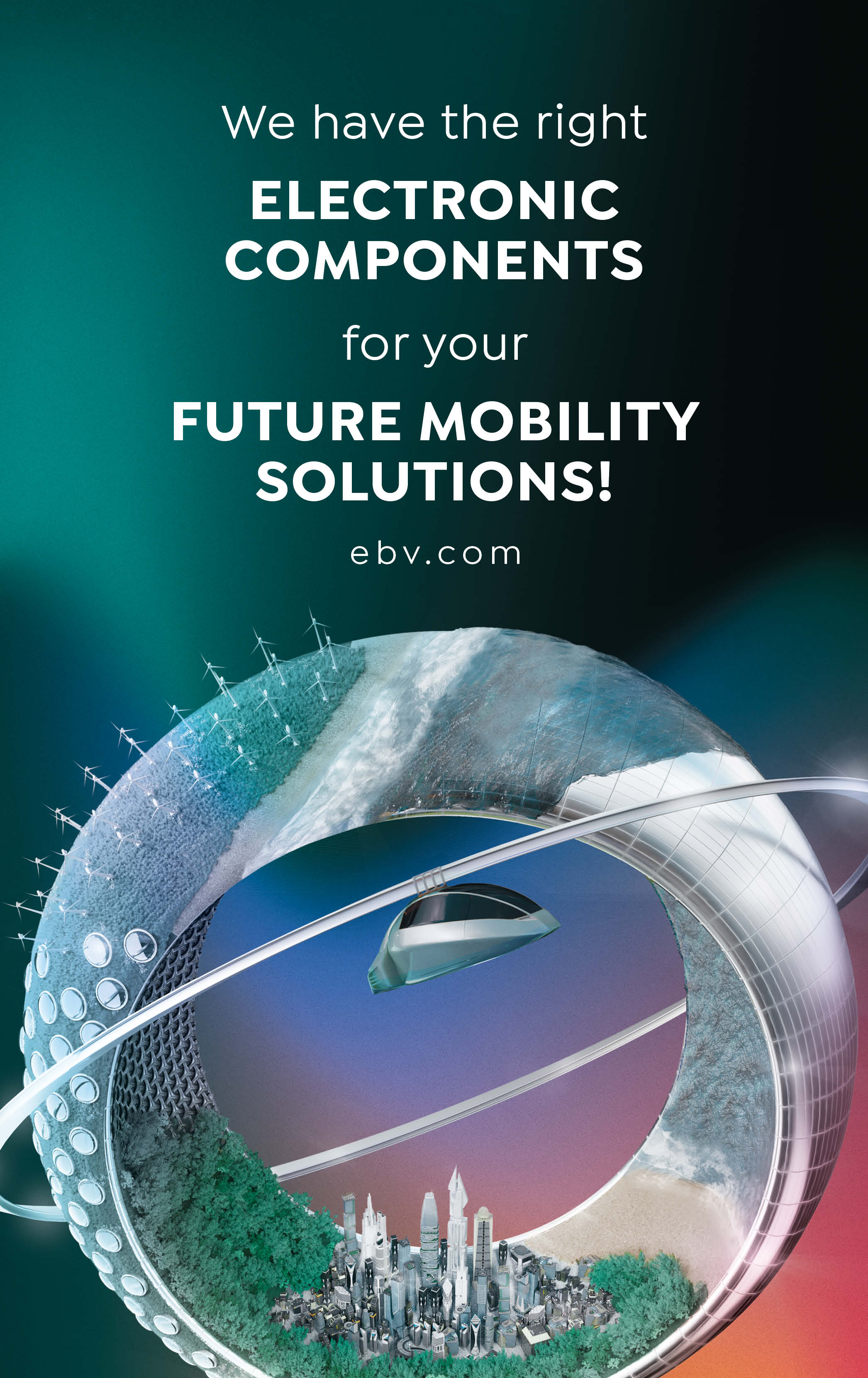Most solutions relating to future mobility would not be possible without the use of semiconductors and microelectronics. That’s why the field of mobility is so important for EBV Elektronik, highlights Frank-Steffen Russ, Senior Director Market Segments. He’s also fascinated by how mobility is constantly reinventing itself, and how new solutions are quickly developed when existing ones reach their limits.
In your view, what are currently the most exciting trends in the mobility sector?
Frank-Steffen Russ: For me, fully automated systems – in particular autonomous drones for passenger transport – are without doubt at the pinnacle of the new mobility solutions that are coming around the corner.
How important is the field of mobility for EBV Elektronik as a distributor of semiconductor solutions?
F.-S. R.: It’s very important. We’re working on mobility technologies and solutions in many of our vertical market segments. Traditionally this work started in our Automotive & Aerospace segment, but our experts in the Smart City & Infrastructure segment are now also looking at the topic, offering solutions for traffic monitoring, for example, and of course all aspects of charging infrastructure.
As we search for solutions to distribute future fuels such as hydrogen or eFuels, experts from across many of our segments are collaborating to provide suitable solutions together with our suppliers.
What solutions do you have in your portfolio in this respect?
F.-S. R.: We offer almost all of the cutting-edge electronics technology that is needed to bring state-of-the-art vehicles of the future to market. This includes power management ICs, current sensors and MCUs for implementing battery management systems, as well as microelectronics for motor management right through to analogue ICs required for signal preparation and data conversion. We also offer FPGAs and memories for ADAS systems, and touch-sensitive displays used as human-machine interfaces for central control consoles in vehicles. Solutions focusing on artificial intelligence and machine learning are becoming increasingly important. We also develop specific semiconductor solutions for our customers.
Who are your customers in the mobility segment – large corporate groups, SMEs, start-ups?
F.-S. R.: We offer solutions for any company, regardless of how big they are or how much expertise they already have in-house. We provide tailored support for all customers.
As a semiconductor distributor, how can EBV Elektronik help companies who want to develop a new mobility solution?
F.-S. R.: We’ve been operating in this market for over 50 years, including more than 25 in the Automotive segment. This means we not only have the leading suppliers in our portfolio, we also have our own “high-graded” expertise about the market and technologies. Our application engineers can therefore provide our customers with holistic advice, including system support. What’s more, our customers can also call on a wide network of development partners and production service providers. All this is then rounded off by matching logistics services.
StartMeUp is EBV’s special campaign for start-ups. How exactly are you supporting fledgling companies?
F.-S. R.: In order to successfully found a start-up, you need outstanding engineering skills, reliable supply chains, comprehensive experience in working with technology, and a network of diverse partners to market the products. EBV can help start-ups with all of these things. We don’t just provide technical advice, we also look at things like sales. Development kits and our software support services are other ways in which we help companies to launch their products quickly and successfully.
Our “Innovation Hero” represents a great opportunity as well – it’s a prize that we award as part of the Innovation World Cup. The idea is to find innovative solutions in different fields, including infrastructure and transportation, enabling techpreneurs to become part of the world’s leading eco-system for tech innovations – the Innovation World Cup Series.
Which start-ups in the mobility sector have you already supported?
F.-S. R.: You’re sure to have heard of Lilium – their air taxis are expected to start the final assembly phase in 2023. Vay is another successful company that we supported. Its teledrive-first approach is a bridging technology on the road to autonomous driving.
You don’t just want to deliver components, you also want to supply entire solutions. A good example of this is your “Power of Three” campaign in collaboration with two other companies from the Avnet Group – Avnet Abacus and Avnet Embedded. What are you bringing to the table?
F.-S. R.: We’re offering our shared base modules and entire systems, which can be used to speed up the design and launch of charging stations for electric vehicles. That includes not only hardware but also software, IP, electromechanics and connection technology. Working hand in hand, we offer an end-to-end solution and provide customers with everything they need for a charging solution from a single source.
Is “Power of Three” the type of thing that EBV Elektronik is intending to focus more on in future? Not just being a supplier of components, but a provider of solutions or a one-stop shop?
F.-S. R.: Applications are becoming increasingly complex, and we need holistic and bespoke solutions to master them. That’s why providing advice at system level has long been part and parcel of what we do. The design process for a charging station is a good way of demonstrating our capabilities in this respect.
Are you planning other, similar collaborations in the mobility segment?
F.-S. R.: Yes – one example is the use of artificial intelligence. We have already built up a network of partners for this, comprising chip manufacturers, software providers and integrators.
Let’s look into the crystal ball for a moment – how do you see our mobility solutions changing in the next 25 years?
F.-S. R.: This is where artificial intelligence comes in again – it’ll be used for autonomous systems everywhere. Micromobility solutions – including autonomous ones – and drones are set to expand existing mobility solutions, and the “last mile” will also directly influence our day-to-day lives.



